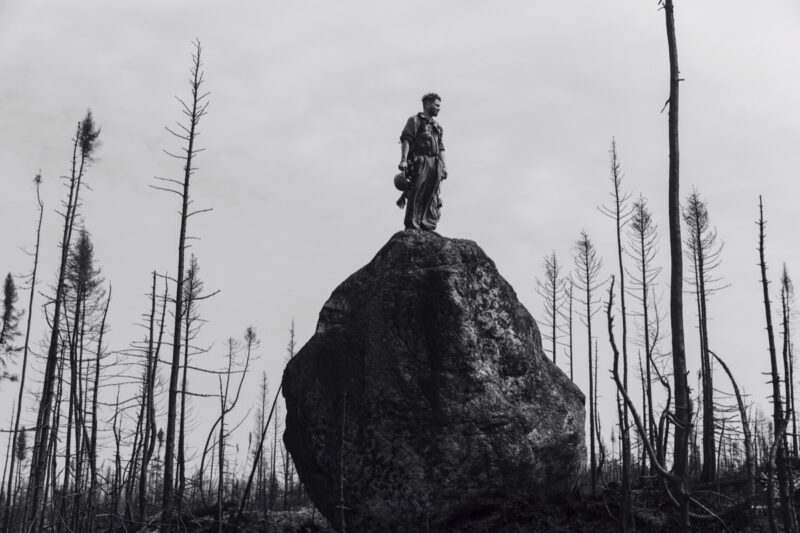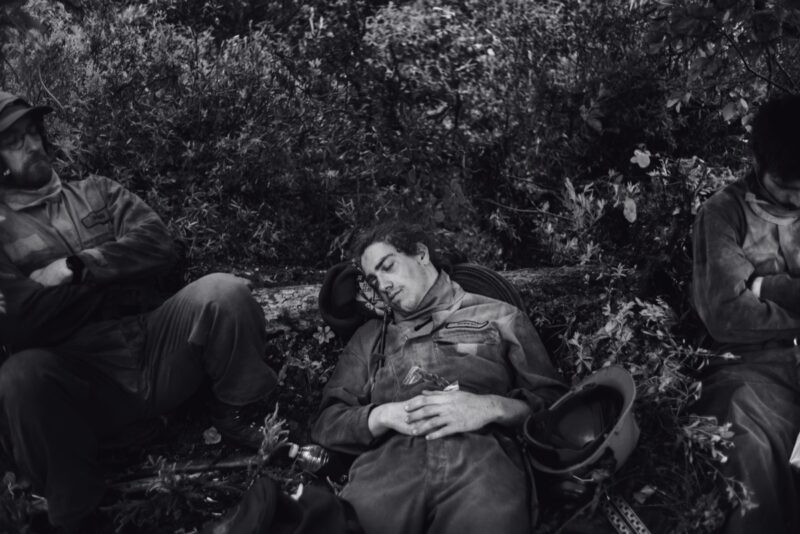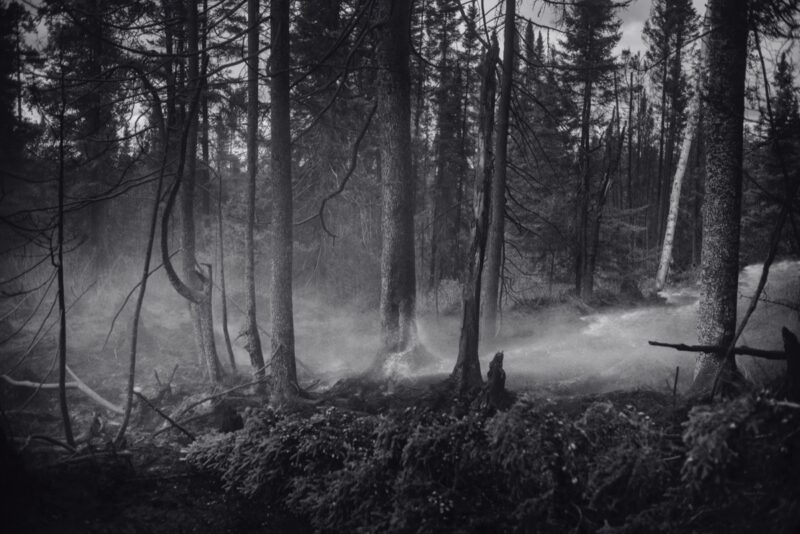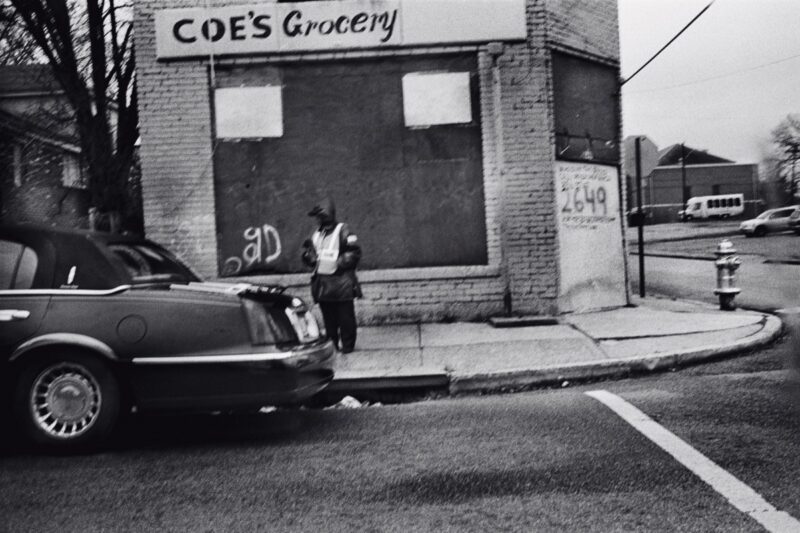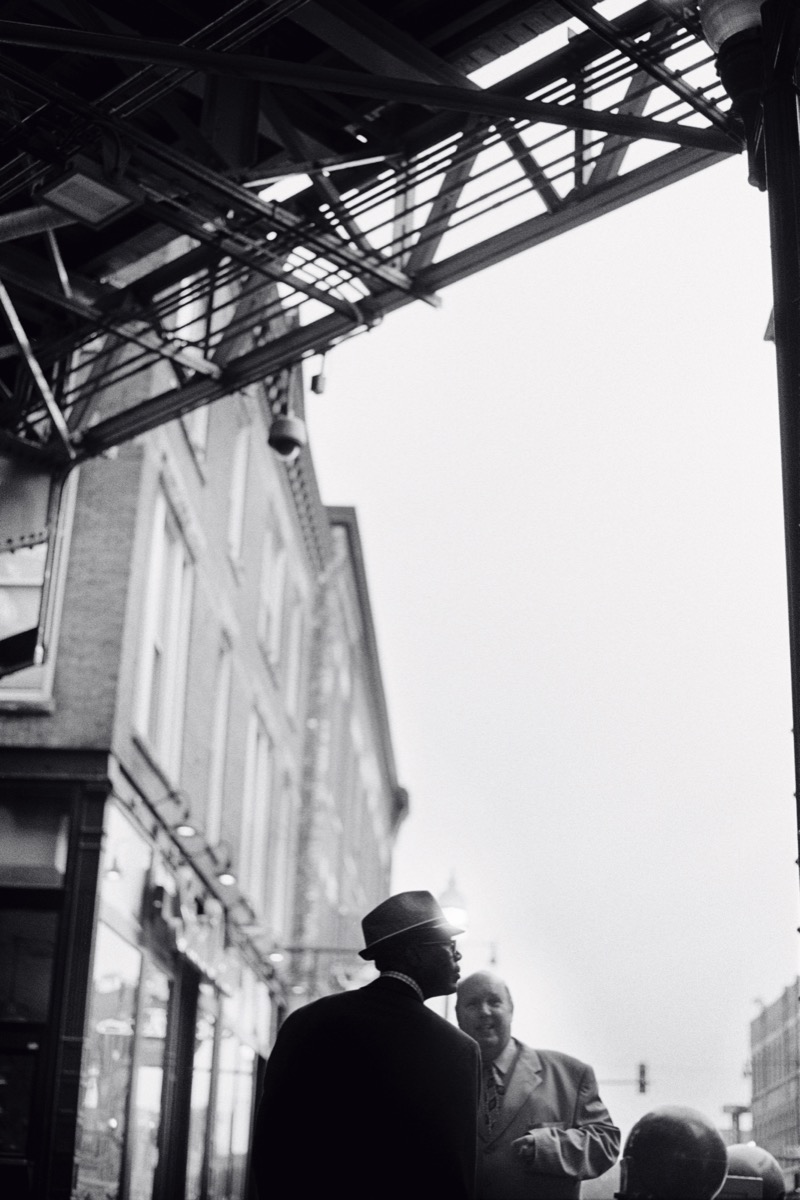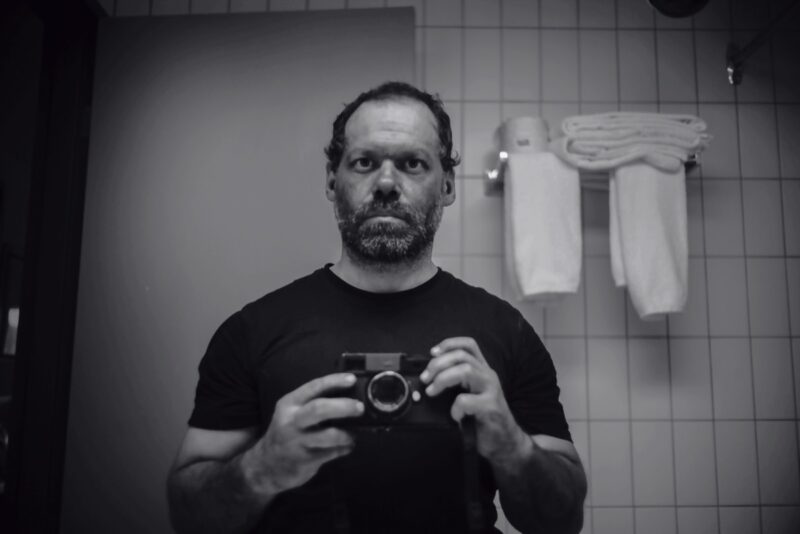[Fall 2024]
Charles-Frédérick Ouellet, A Book – and an Award
par Sophie Mangado
In late April 2024, the Quebec artist Charles-Frédérick Ouellet was preparing a pop-up exhibition for the launch of his book To Winter There.1 As luck would have it, Ouellet had won the 2024 World Press Photo (WPP) award in the “single image” category, North and Central America region, a few weeks before. Beyond its subject matter, this image also embodied his approach, which constantly swings between documentary and artistic. His long-term projects involve a sense of narrative with a strong attachment to territory. At sea for the series Le Naufrage, following in the footsteps of an explorer on a voyage between Labrador and Louisiana for To Winter There, or recording the denuding of land swept by forest fires for the series Ligne de foudre, from which the WPP winning image was taken, Ouellet interrogates our relationship with geographic space and the natural elements. A few hours before the Montreal launch of his book, Ouellet talked with me about the process that earned him the WPP award and his approach to his projects.
sophie mangado: Your eye for your subjects is at the intersection of narrative documentary photography, sometimes even press photography, and a more conceptual auteur approach. Where do you see yourself in this continuum?
charles-frédérick ouellet: My first impetus toward photography was an interest in documentary. After an internship at the Magnum agency in Paris, I came back to Quebec, where I began to work in artist-run centres. I discovered a very different environment. It created a sort of rupture, because my work had been fundamentally documentary up to then. In artist-run centres, I came into contact with a conceptual world. My work found its way into private galleries and I became interested in photobooks – autonomous distribution methods, away from the media sector. I did very little dissemination through the media. Then I began to offer sequences of images adapted from my series, which usually took a documentary form similar to reportage, which were published in the press. So, in a way, I was cultivating these two approaches in parallel. I went from long-term projects to direct commissions to be delivered in a few days.
Today, I no longer try to figure out whether I belong more to one world than the other. I work in both. The news media consider my approach too distanced from the subject; the art field may criticize me for an approach that’s too traditional. I find my way; this multiple skill set suits me. I cultivate a practice in which some images have a short life and others take time before finding a place in the public space. To me, this means freedom.
sm: What spin-off effects can you expect following the awarding of the prize by the WPP? The jury examines tens of thousands of images every year. Had you submitted a large number of images, several series?
cfo: I’ve been entering the competition every year for fifteen years; it’s essential. This year, I sent just one project, from my series Ligne de foudre. Of course, as an independent photographer, winning the prize for the North and Central America region up against photographers from the major American newspapers, who have huge resources, is a real coup. That being said, there are no direct effects. The next morning, the phone doesn’t ring to send you to take photographs somewhere. But it’s a seal of credibility for your work. When you contact people in the photography world who know you’re a WPP winner, it means that they consider your proposals.
I also think that the award led me to think more deeply about how I will deal with “my” territory. Receiving a prize like that, territorialized, tells me that they feel I understand the local issues that I work on.
sm: The jury took one image from the series as an example. Do you feel that that’s the one that should have been chosen?
cfo: If one image had to stand out in that series, I think that’s the right one. It was taken when I’d been in the field for a long time. It’s a context in which your mind is working a lot on intuition. At the beginning, you take pictures, it doesn’t work, you keep looking. At one point, you begin to step back and photograph other things. Your brain gets tired, you aren’t thinking any more. I had been passing by that boulder [central to the image] all day, with a patrol. We weren’t fighting a fire that day. We had to check the hot spots in a given area, looking out for possible hot smoke. It was a day when I had some time, when I was intellectually available, ready to see things differently. The image came like that. Having spent more than a month covering and fighting fires, I had a better understanding of the relevance of talking about what happens once the fire is out. What remains and how we look at it.
I also like to nod to the history of photography. In the series sent to the WPP, two or three shots are fairly direct references to images by Larry Burrows and Don McCullin. I designed the series that way, hoping it would stand out. Presenting scenes with poses almost identical to those of representations that inhabit the collective consciousness may increase the chances of catching the jury’s eye. In the field, these nods to emblematic images are made instinctively. For this one, I remembered a photograph by William Notman, which showed piles of cut wood in a forest. The human figures served to show its scale. I remembered that scale effect when I saw the boulder. The mission of the day was to look for signs of smoke on the horizon. One of the patrollers inevitably climbed the boulder; there was the image.
sm: Ironically, this picture was never published!
cfo: The Globe and Mail published the series that it had commissioned from me, though the season wasn’t over yet. I was still in the field, and this picture was taken afterward. It’s also why I was able to integrate new images into the portfolio submitted to the WPP. I was completely free to build my own sequence. I chose what The Globe and Mail hadn’t used; I added from what I had photographed after the commission. I wanted a sequence more faithful to my visual language, between documentary and art, but also stripped of the presence of fire. So, I worked on the idea of not offering any images of the fire but instead showing the state of fatigue. These are scenes in which you see workers who are dog-tired or taking stock of the damage. These images tell the story of nature’s exhaustion. In other, more abstract shots, you see people resting, sleeping in the forest, or wading through a river. I wanted to show the complexity of operating in the forest. From inside the process, I realized that the goal wasn’t so much to put out the fire as to try to shape its trajectory. We’ve been trying to suppress fires for a hundred and fifty years. The result is that a lot of combustible material has accumulated. The forest inevitably regenerates itself. The fire will happen anyway. How can we live with it if we’re always intervening in nature and changing its behaviour? This is the essence of the reflection underlying my project. I wasn’t casting a journalistic eye on fighting forest fires.
sm: You took auxiliary firefighter training so that you could work in the midst of the fires. It’s first and foremost a question of accessibility and safety, but it also let you immerse yourself completely. Without it, this series probably wouldn’t have been possible.
cfo: I received training in spring 2023, at the same time as a colleague, the photographer and director Nicolas Lévesque. We had been working on a project on the subject since 2021. After two years running after fires, it was suggested that we take the training so that we could accompany the firefighters into the field. But the authorities were worried about sending us, since they needed firefighting warriors, not photographers. So, we went mainly as firefighters, with the agreement that we could document the situation as circumstances permitted. We gradually won their confidence. To the point that we could photograph from inside. It was in these moments when you’re completely wiped out and submerged, that you capture images that others don’t have. Because you have access to people’s private moments.
There’s one thing I learned when I made my series at sea with the fishers. At first, I was approaching it as a “reporter.” But I remember a moment with a fisher whose eyes were constantly scanning the horizon as he talked to me. Literally, it was a flat horizon line, but he saw things that I didn’t. He told me about coming storms, about the look of the sea. Once I was listening, I could capture the images that he evoked, when the time came. It’s the same thing with forest fires. You have to listen to the firefighters. You have to understand when they tell you the birds haven’t come back, it’s because there’s still smoke somewhere. You had to have sharp ears to hear them, like a form of intellectual availability. If you never stop taking pictures and don’t pay attention to people, you miss things.
sm: We feel this immersive stance when we look through the book To Winter There. Do you envisage exhibiting this project, or was publishing it as a book your initial intention?
cfo: It’s the first project that I’m not really considering exhibiting. I knew right away that there would be lots of images and I saw it developing on the road. I wanted a book with a filmic effect, in which you don’t need to stop at each photograph. There are transitory images, key images, images that are less strong. For me, the important thing is that as a group they give the reading meaning. Also, I didn’t see them in a large format, because the sense of intimacy was really important in this project. When I look at the images in the book, I know that I don’t need them to be larger: the way they’re printed is completely satisfactory to me. A book is a trace that lasts longer. It takes a long time to plan an exhibition, and the result is ephemeral: I have to make a lot of concessions along the way. With this publication, I have an object faithful to my approach, without compromise, that people can take way and look through alone, in private. It’s the form of dissemination that made sense for this body of work. Translated by Käthe Roth
[ Complete issue, in print and digital version, available here: Ciel variable 127 – SISTERS, FIGHTERS, QUEENS ] [ Complete article in digital version available here: Charles-Frédérick Ouellet, A Book – and an Award]
NOTES
1 To Winter There, with texts by Guy Sioui Durand (Paris: Éditions LOCO, 2023). The book launch was accompanied by a brief exhibition (April 26–28, 2024) at Galerie POPOP in the Belgo building in downtown Montreal.

